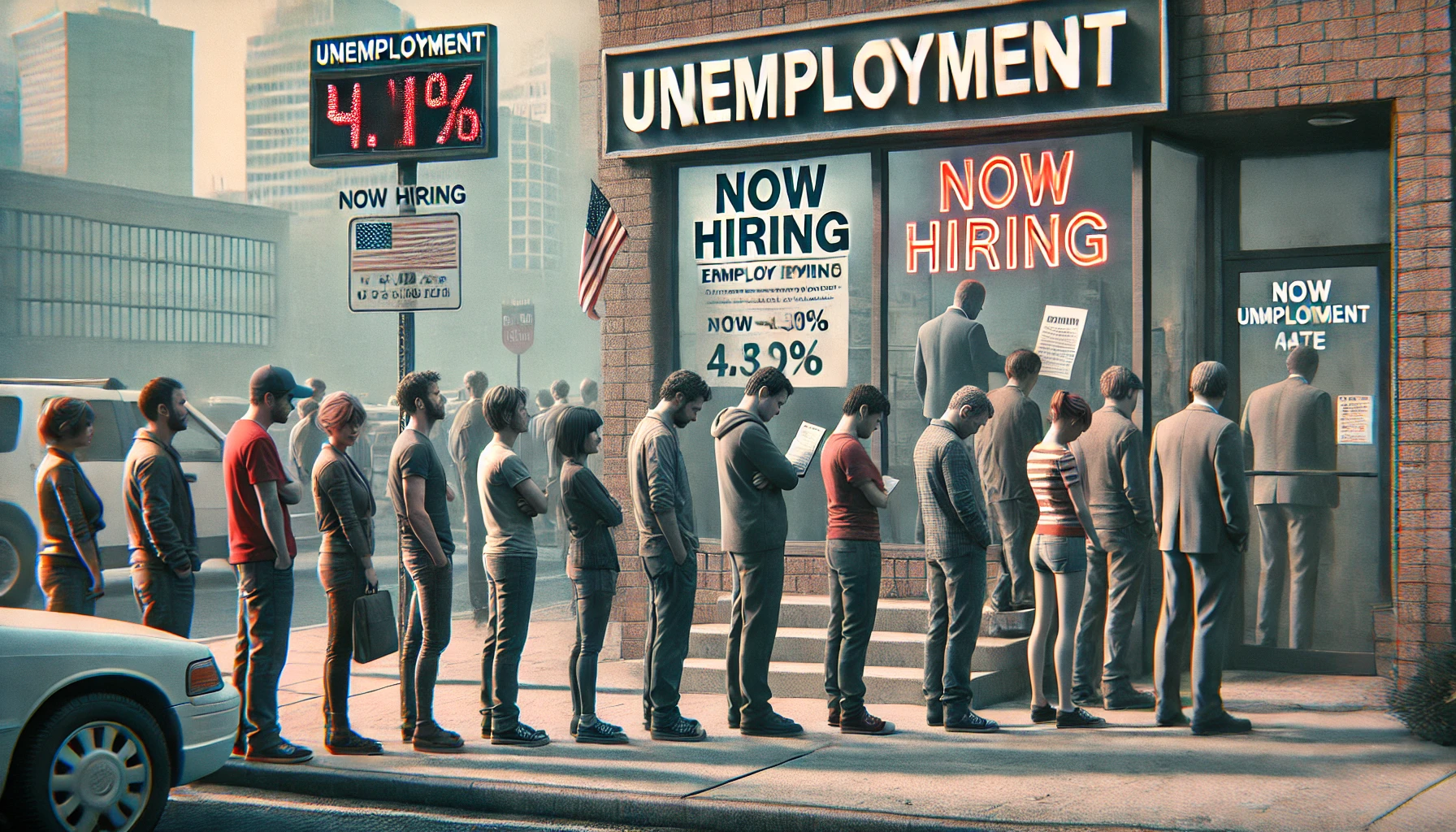| Key Points: -The US economy added 151,000 jobs in February, below the expected 160,000 but higher than January’s revised 125,000. – The jobless rate ticked up to 4.1% as labor force participation declined. – Average hourly earnings rose 0.3% month-over-month, signaling a possible slowdown in inflation pressures. |
The US labor market continued to show signs of softening in February, with employers adding 151,000 jobs, missing economists’ expectations of 160,000. The unemployment rate rose to 4.1%, up from 4% in January, as the number of job seekers increased while labor force participation declined to 62.4%. This marks a continued trend of moderation in hiring as businesses respond to economic uncertainty and shifting government policies.
Despite the miss on job creation, analysts note that the pace of hiring remains sufficient to maintain employment stability. RSM chief economist Joe Brusuelas described the report as a “Goldilocks” scenario, where job growth is neither too strong nor too weak. He pointed out that maintaining 100,000 to 150,000 new jobs per month is enough to keep the labor market steady.
One of the most notable shifts in February was the decline in federal government employment, which saw a net loss of 10,000 jobs. This aligns with the Trump administration’s push to reduce the size of the federal workforce, a policy that could lead to more widespread job losses in the coming months. Additionally, the number of Americans working multiple jobs rose to a record high of 8.9 million, highlighting concerns over job quality and economic stability.
Wage growth also showed signs of cooling, with average hourly earnings increasing by 0.3% from the previous month, down from January’s 0.4%. On an annual basis, wages rose 4%, slightly lower than the prior month’s 4.1% gain. This moderation could ease inflationary pressures, a key consideration for the Federal Reserve as it weighs future interest rate cuts.
The labor market’s softening is occurring against a backdrop of broader economic uncertainty, fueled by shifting trade policies and corporate cost-cutting measures. The Trump administration’s new tariff policies are aimed at bolstering domestic manufacturing, but some industries, such as aluminum production, warn that the measures could lead to job losses. Additionally, major companies, including Goldman Sachs and Disney, have announced significant layoffs, raising concerns that the unemployment rate may continue to climb.
While some sectors, such as healthcare and transportation, continued to add jobs, others showed signs of strain. The household survey, which includes broader employment data, recorded a drop of nearly 600,000 employed individuals, the largest decline in over a year. Moreover, part-time employment for economic reasons increased, pushing the underemployment rate to its highest level since 2021.
Looking ahead, economists will be watching upcoming inflation data and Federal Reserve policy decisions to gauge the trajectory of the labor market. Although investors are still pricing in three rate cuts this year, uncertainty over inflation and labor market conditions could impact the Fed’s timeline. The February jobs report underscores a delicate balancing act for policymakers—supporting economic growth while ensuring inflation remains under control.









